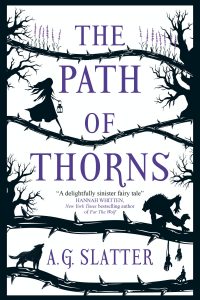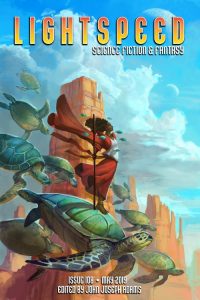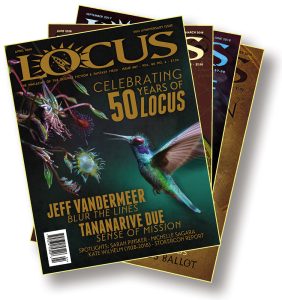The Mune by Sue Dawes and The Hampdenshire Wonder by J.D. Beresford: Review by Niall Harrison
 The Mune, Sue Dawes (Gold SF 978-1-91598-324-4, $19.95, 329pp, tp) March 2025.
The Mune, Sue Dawes (Gold SF 978-1-91598-324-4, $19.95, 329pp, tp) March 2025.
The Hampdenshire Wonder, J.D. Beresford (Sidgwick & Jackson 412pp, hc) 1911. (The MIT Press 978-0-26255-141-0, $19.95, 282pp, tp) March 2025. Cover by Seth.
Who speaks in a novel, and how, is always important. In The Hampdenshire Wonder (1911), a lightly starched scientific romance about superhuman intelligence (and near-superhuman cricket), reissued by The MIT Press with a lucid (if perhaps politely bemused by the cricket) introduction by Ted Chiang, J.D. Beresford demonstrates this point clearly enough to be instructive. And The Mune, Sue Dawes’s astute first novel about a castaway colony of women, distributed in the US by The MIT Press but originated by the recently new British intersectional feminist SF imprint Gold SF, and set slightly before the advent of scientific romance proper but imbricated with its style and concerns (but not with cricket), understands the point well enough to be rewarding. In both novels, who speaks and how they speak are indicators of class, which also means predictors of narrative, although the predictions of a man writing in the early twentieth century are not precisely the same as those of a woman writing in the early twenty-first. Funny how that works out.
Let’s start with The Mune. Dawes’s cast are a group of women from Britain, shipwrecked in 1863 and making a go of it on a mysterious island of black sand, unfamiliar plants, and strange beasts. They are all, to borrow a term from the 1868 epigraph by women’s rights campaigner Jessie Boucherett, considered “superfluous,” part of an unmarried “excess” identified in mid-19th-century censuses that was used to justify an early example of societal handwringing about what to do with all the single ladies. Emigration was one suggested solution, and Dawes’s women appear to have been on an emigration ship. Most of the women have spent time in an asylum; a fair number are pregnant. As a group, they cover the racial and class spectrum of their time and place. They include Molly, white, one of the older in the group, the first we meet, and the one who has had the most reading and education, in part due to an arrangement with her psychiatrist, which makes her a handy explainer; Newt, a young biracial woman who has grown up on the streets, cast out after the death of her mother, more of a watcher than a talker; and Betty, a devoutly Christian white 13-year-old who, in the novel’s opening scene, gives birth to a stillborn child forced on her by the man she thinks of as her Master, and on whom she is still fixated. In rotation alongside these three, we watch the group come to terms with their situation, make arrangements for survival, and start to build the community they will come to refer to as simply “the mune.”
I say “alongside” because, my introductory paragraph notwithstanding, they do not speak directly to us. But we can see how they speak. Their viewpoints are all rendered in close third-person present tense, adapted according to their background to ensure we understand how differently each of them sees the world. This pays off neatly in the novel’s second half, but made me hesitate in the opening chapters: The execution felt a little broad. Molly’s thinking is provided with a clarity appropriate to the then-new middle class, politely composed with standard grammar. Newt’s chapters are filled with “ain’t” and “she don’t need”; mouths are traps, eyes are goggles, teeth are ivories. Betty is equally working-class but more Northern: she thinks with “nowt” and “babby” and “summat.” None of it feels disrespectful, these women are not reduced to caricatures; but they did feel, for quite a while, a bit like performances. And it was enough to be a little distracting from the development of the mune, the conflicts and compromises within the group, the decisions they make about the future. Step by step, the mune breaks from the society they left behind. One of their most significant early decisions is a decision about language: all of their babies are named after features of the island and the natural world, such as Lightning, Clay, Rainbow, and Star. Another is a decision about organisation: Their children will be raised together, as a group and by the group.
And then, unexpectedly, comes a voice that does speak directly to the reader, in a more commanding cadence. “I do not know what possessed me to voyage in the small vessel,” says a narrator who clearly has faith in their main-character forcefield. The chapter is titled “Lagoon Island: a commune under the sea” and framed as an extract from “Master’s Book of Scientific Stories”. It is the first of five such extracts that rev up the reader’s speculation about the nature of the island; when subsequent stories introduce the idea of shifts in space and time, or a device that shows visions of a seemingly familiar black island in a green sea, we take hints. But more fundamentally, the stories also confirm that Betty is ultimately going to be the central figure in the narrative, because by this point, we know she was taught to read by her Master in part using the book they are drawn from, which means they have shaped her thinking. And this is a striking move, because Betty is by some distance the character who is least reconciled to the new life of the mune. She is desperate to find a way back to England; incredibly concerned with what she perceives to be her virtue (she berates herself for having “tempted” her Master, leading to her current predicament); and she believes that, without men, the mune is doomed to fail owing to the weaknesses of women. We can quickly see how the stories may have influenced Betty, in complex and contradictory ways. The narrator of “Lagoon Island” is alarmed by the lack of conventional gender roles in the undersea commune, an alarm we see echoed in Betty’s behaviour, yet it is Betty who also draws on the story to suggest communal parenting, so that orphans (such as she was) are raised “the same as the others.”
 This is perhaps the right moment to bring Beresford’s The Hampdenshire Wonder back into the discussion, since its central thesis is that being allowed to develop free of social constraints, “the restriction imposed by habit,” is what has the potential to unlock greatness. We see this first via the cricket career of Ginger Stott, as a proof of principle. Stott is a latecomer to the “gentleman’s game,” a working-class player, and develops a uniquely successful bowling method (in one inning he takes a scarcely plausible ten wickets for five runs, including a double hat-trick) that we are given to understand is enabled partly by some specifics of physiology, but mostly by his total lack of familiarity with conventional approaches and thus, his ability to innovate. When his career is cut short by injury, he becomes obsessed with taking an apprentice, but cannot find anyone with the requisite innocence. Hence, eventually, a son, who is indeed markedly and patently not of the common run, but not notable for his sporting prowess: Rather he is one of the earliest exemplars in SF of the genius unbound, the more-than-human intellect whose insights are sublime and terrible. The Wonder, as the child is primarily known, devours entire libraries of philosophy and science, eventually expounding a theory-of-everything that (of course) cannot be recreated on the page, but implies what Chiang calls (brilliantly) in his introduction a kind of “cognitive heat death,” a point beyond which learning, and perhaps therefore living, becomes irrelevant. The heightened passages grappling with this possibility convey, without any particular pyrotechnics, the proper scientific romance chill of perspective, which is to say that The Hampdenshire Wonder has more than just historical value, and earns this latest reprint.
This is perhaps the right moment to bring Beresford’s The Hampdenshire Wonder back into the discussion, since its central thesis is that being allowed to develop free of social constraints, “the restriction imposed by habit,” is what has the potential to unlock greatness. We see this first via the cricket career of Ginger Stott, as a proof of principle. Stott is a latecomer to the “gentleman’s game,” a working-class player, and develops a uniquely successful bowling method (in one inning he takes a scarcely plausible ten wickets for five runs, including a double hat-trick) that we are given to understand is enabled partly by some specifics of physiology, but mostly by his total lack of familiarity with conventional approaches and thus, his ability to innovate. When his career is cut short by injury, he becomes obsessed with taking an apprentice, but cannot find anyone with the requisite innocence. Hence, eventually, a son, who is indeed markedly and patently not of the common run, but not notable for his sporting prowess: Rather he is one of the earliest exemplars in SF of the genius unbound, the more-than-human intellect whose insights are sublime and terrible. The Wonder, as the child is primarily known, devours entire libraries of philosophy and science, eventually expounding a theory-of-everything that (of course) cannot be recreated on the page, but implies what Chiang calls (brilliantly) in his introduction a kind of “cognitive heat death,” a point beyond which learning, and perhaps therefore living, becomes irrelevant. The heightened passages grappling with this possibility convey, without any particular pyrotechnics, the proper scientific romance chill of perspective, which is to say that The Hampdenshire Wonder has more than just historical value, and earns this latest reprint.
But it is also a historical artefact. It is narrated, in the first person, by essentially the same confident voice as Master’s scientific stories. Like the narrator of “Lagoon Island”, he professes to have stumbled into the story – “I could not say” are the novel’s first words – but evinces no doubt that he has the right, in fact the duty, to relay subsequent events to us. But where in The Mune the speaker doesn’t know they are a butterfly pinned for our examination, in The Hampdenshire Wonder they are correct to believe that they govern the book; and where in The Mune the dominant voices are filled with colloquialisms and dropped aitches, in The Hampdenshire Wonder that voice belongs to the object of study, the Wonder himself. Beresford’s narrative is in fact acutely anxious about class throughout. Sometimes the intent is clearly parodic, such as the scene in which the Wonder is interviewed by a panel of local notables who believe he should be made to go to school, and makes the lot of them look like duffers. But more often it seems that part of the horror of the Wonder is that such insight could arise from the autodidacticism of, as the narrator has it at one point, “a vulgar little village boy.” One character attempts to appeal to what they feel should be the Wonder’s actual class interest: “We [meaning intellectuals] are at the mercy of that great mass of people,” they argue. Perhaps the most damning moment of all is when the impact of the Wonder’s cognitive heat death insight is likened to the threat of his father’s bowling. “This man will have to be barred,” was the line, we are told. “It means the end of cricket.” Of both father and son they might as well say, the end of gentlemen. It’s no surprise when the novel ends, instead, with the end of the Wonder.
And it is this gendered class anxiety that The Mune dismantles. There is only one woman of note in The Hampdenshire Wonder, the Wonder’s mother, who we are told “had a reasoning and intelligent mind” but who – alas! – unlike her husband and unlike her son, is “ruled by the conventions which hold her sex in bondage.” In contrast, as noted above, even Betty, even as she believes the mune is a wrong turn that should be escaped, is capable of some unconventional thinking. And so she does discover an escape route, a portal that leads back to her original time and place, whereupon she also discovers that she is older than she should be – that is, time has passed faster on the island – which causes her Master, who scents the chance to be the protagonist of a real-life scientific story, to insist that she lead him back through the portal. But the grown-up children they find have carried the story forward with no need of a Master. When they speak and think, it is with the heritage of all the founders. They have been raised, as Betty suggested, as parts of one story, and what had seemed a little contrived in the first half of The Mune has evolved into a fit and organic shared language in the second half. Lightning, Star, Clay and the others think with Molly’s knowledge, and Newt’s dropped aitches, and Betty’s nowts. Perhaps even more important is what they don’t have, namely a binary conception of gender. In the absence of adult men, the word-world of the mune has no concept of masculinity and, correspondingly, no concept of femininity either. They are all them, or us, never him or her, and from that flows social principles, such as separate roles for “carrying” and “caring,” without the two automatically going together. This, the mune argue, is liberation for all, a wonder worth building, a kind of greatness unlocked. The Master of course is as uncomprehending as any man entering Whileaway, and Betty, although she picks the right side in the end, struggles with its full scope. But by its last page The Mune has put forward a convincing argument for precisely why it matters who speaks and how: because it is through words that new worlds become possible.
Interested in these titles? Your purchase through the links below brings us a small amount of affiliate income and helps us keep doing all the reviews you love to read!
 This review and more like it in the March issue of Locus.
This review and more like it in the March issue of Locus.
While you are here, please take a moment to support Locus with a one-time or recurring donation. We rely on reader donations to keep the magazine and site going, and would like to keep the site paywall free, but WE NEED YOUR FINANCIAL SUPPORT to continue quality coverage of the science fiction and fantasy field.
©Locus Magazine. Copyrighted material may not be republished without permission of LSFF.









